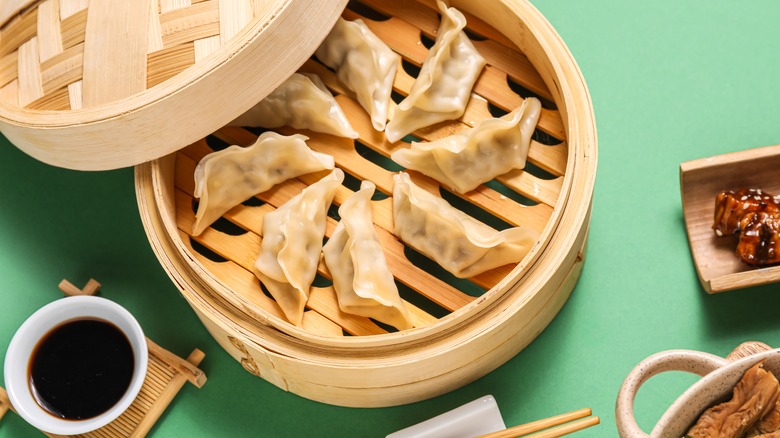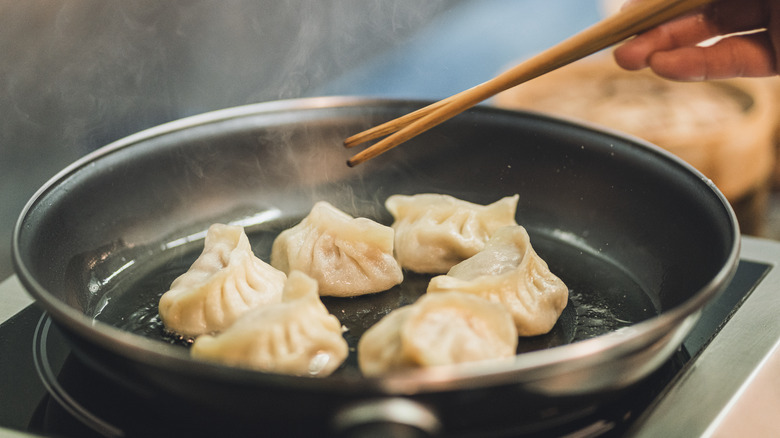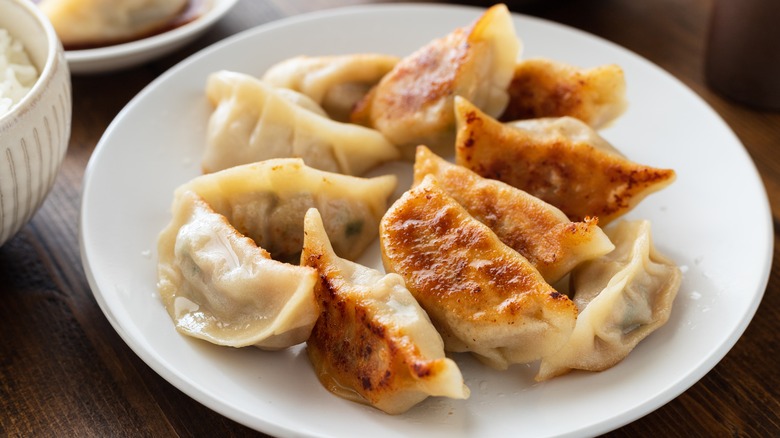Cookbook Author Jing Gao's Tips And Tricks For Cooking Perfect Dumplings — Boiled Or Fried
When it comes to meals for the Lunar New Year, jiaozi, or Chinese dumplings, are one very popular pick. The BBC said one reason for their popularity around this time of year is that the word for dumpling sounds similar to a Chinese word, jiāozǐ, which refers to the "transition from old to new." Additionally, these dumplings have a shape similar to ancient Chinese currency, and, as a result, they've come to be associated with wealth.
Besides all their symbolism, another great reason to make jiaozi dumplings to ring in the Lunar New Year is simply because they taste delicious. Plus, they're highly versatile — you can fill them with infinite stuffings and cook them in various ways, whether boiled, steamed, or fried.
Whichever preparation method you choose, cookbook author and founder of Fly By Jing, Jing Gao, gave Daily Meal a few pointers: "When cooking jiaozi, a medium-high heat is ideal," she said, adding, "a non-stick skillet or a large pot is essential, depending on your cooking method."
This way, you can get perfectly cooked dumplings with a juicy filling and well-textured exterior. Of course, this may look slightly different depending on how you make your jiaozi, and knowing how to implement that is key.
Get the heat right no matter how you cook your jiaozi
Attaining medium-high heat looks slightly different depending on how you plan to prepare your jiaozi. If you prefer crispy dumplings, pan-frying is the way to go. In this case, Jing Gao told Daily Meal that the trick is to "ensure the oil is hot enough to sizzle upon contact, then add water and cover to steam."
On the other hand, if you're boiling or steaming them, your jiaozi will have a softer, chewier texture. Gao expressed that the best way to yield these results is to "maintain a steady simmer" for perfectly cooked jiaozi. And if you want to steam your dumplings but don't have a steamer? Gao had a solution for that, too. "If you don't have a steamer, a colander set over a pot of boiling water, covered with a lid, can be an effective substitute."
Signs your jiaozi is ready
While you may have mastered getting the heat right as you cook your jiaozi, you'll still need to know when they're done. Otherwise, you could wind up with dumplings that are either burnt to a crisp or raw inside.
You'll want to pay attention to their appearance to tell if your jiaozi are ready to eat. "The tell-tale sign of perfectly cooked jiaozi is when they become puffy and float to the surface if boiled. For pan-fried jiaozi, look for a golden-brown crust on the bottom," Gao declared.
When steaming your dumplings, they should look similar to boiled jiaozi, and if you've used store-bought wrappers, they should allow you to faintly see the filling inside them.
It's also important to check that the filling is cooked, particularly if you've used meat. In this case, using a food thermometer to check for an internal temperature of 165 F is the way to go. With Gao's tips and tricks, you can get delicious, juicy, and perfectly cooked jiaozi, no matter how you prepare them.


